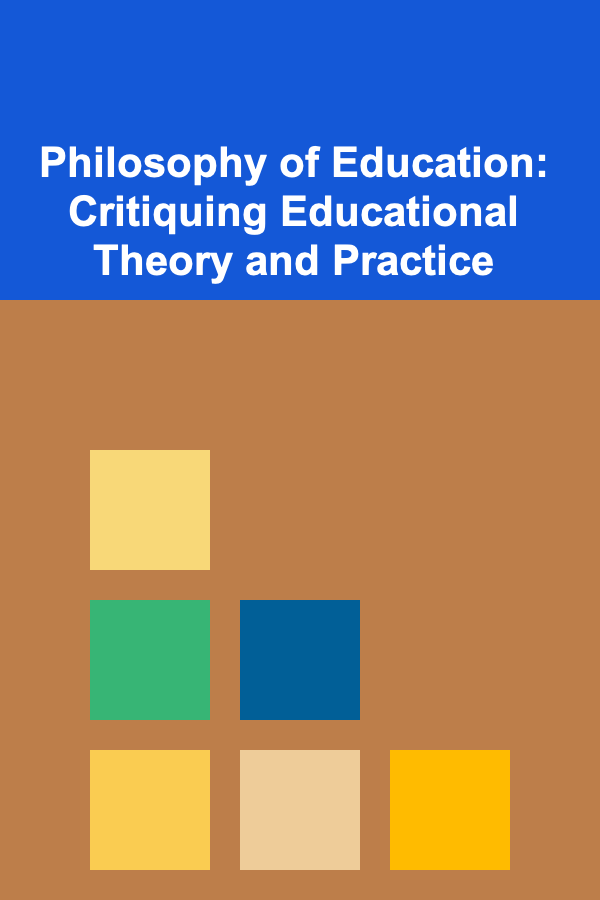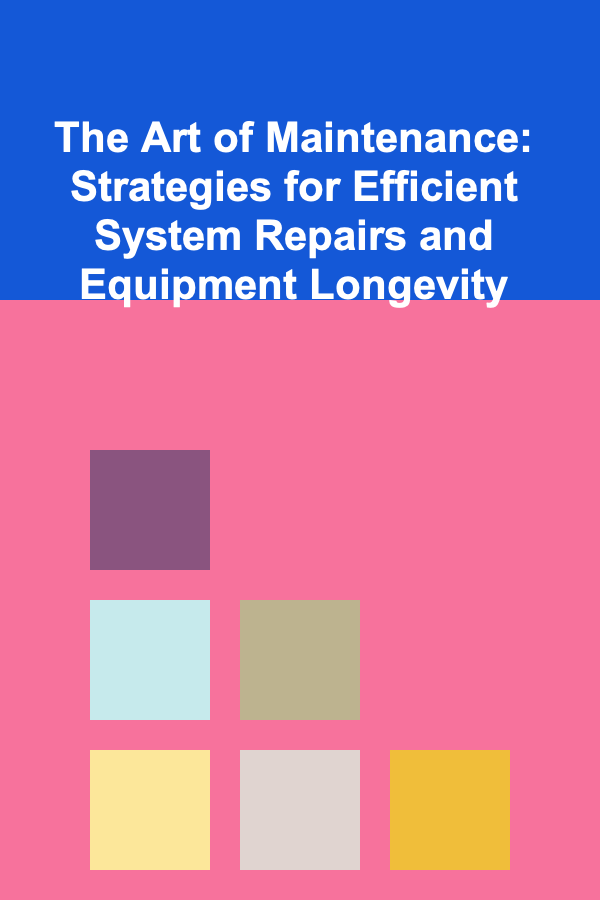
Philosophy of Education: Critiquing Educational Theory and Practice
ebook include PDF & Audio bundle (Micro Guide)
$12.99$6.99
Limited Time Offer! Order within the next:

Education is a cornerstone of human development and society. It shapes individuals, communities, and entire civilizations. Yet, the way education is conceptualized and practiced has evolved over time, guided by various philosophical principles. While educational theories aim to guide practice, they are not without criticism. In this article, we explore the philosophy of education, critically analyzing both the theoretical foundations and real-world implications of different educational practices.
The Role of Philosophy in Education
Philosophy of education concerns itself with the fundamental questions about the nature, aims, and methods of education. It questions the purpose of education, the relationship between teacher and student, and the broader role education plays in society. Educational philosophies draw upon a variety of philosophical schools of thought, each of which advocates for different approaches to teaching and learning.
At its core, philosophy of education can be divided into two primary components:
- Normative philosophy: This addresses what ought to be the aims and methods of education. What should students be taught? What role do educators play in shaping the future of students?
- Descriptive philosophy: This focuses on understanding how educational systems and practices function in reality. It investigates how education actually operates in different cultural and historical contexts.
Educational theories build upon these questions, providing frameworks to better understand how education should occur. However, as with any theory, they come with their own set of limitations.
Major Educational Theories and Their Critique
1. Perennialism
Perennialism is one of the oldest educational philosophies. It asserts that the aim of education should be to teach timeless truths and principles that remain unchanged throughout history. The educational curriculum, according to perennialists, should focus on the great works of literature, philosophy, and the arts. This approach stresses intellectual discipline and moral development, emphasizing the cultivation of rational thought and critical reasoning.
Critique of Perennialism:
- Eurocentrism and Elitism: Critics argue that perennialism's emphasis on Western canon neglects the diversity of global knowledge and cultures. Focusing solely on a narrow set of classical texts may result in an education system that is exclusive and inaccessible to many students, particularly those from marginalized groups.
- Relevance to Modern Society: The argument that timeless knowledge should dominate the curriculum can be seen as out of touch with the needs of a rapidly changing world. In today's context, educational practices must address contemporary social, technological, and political issues, not just the classical ideals of a bygone era.
- Lack of Practical Application: The perennialist focus on abstract thinking and traditional texts can often overlook the development of practical skills, which are increasingly demanded in today's job market.
2. Progressivism
Progressivism, heavily influenced by John Dewey, asserts that education should be centered around the needs and interests of students, fostering a more dynamic and experiential approach to learning. According to progressivism, students should be actively involved in their own learning, with a curriculum designed around real-world problems and hands-on activities.
Critique of Progressivism:
- Overemphasis on Individualism: While progressivism advocates for student-centered learning, critics argue that it can place too much emphasis on individual experience, potentially neglecting the development of social and moral values that are essential in building a cohesive society.
- Lack of Structure: Critics also contend that progressivism's flexible, student-driven curriculum may lead to a lack of necessary structure. Without a strong framework to guide learning, some students may struggle to acquire foundational knowledge that is critical for later academic success.
- Inequality in Resources: Progressive education requires well-trained teachers, appropriate resources, and a favorable classroom environment to succeed. In underfunded schools or areas with limited educational resources, progressive methods may be difficult to implement effectively.
3. Behaviorism
Rooted in the principles of psychology, behaviorism focuses on observable behaviors and the use of reinforcement to shape learning. Behaviorist education is highly structured, with teachers providing clear expectations and rewards for correct responses. Learning is viewed as a process of stimulus-response conditioning.
Critique of Behaviorism:
- Dehumanizing and Mechanistic: Critics argue that behaviorism treats students as passive recipients of knowledge, reducing them to mere responders to external stimuli. This approach fails to account for the complex, emotional, and social aspects of learning that shape the human experience.
- Narrow Focus: By focusing primarily on measurable outcomes and behaviors, behaviorism neglects the development of critical thinking, creativity, and emotional intelligence. These qualities are increasingly recognized as essential for navigating modern challenges, yet behaviorist methods often do not foster them.
- Lack of Intrinsic Motivation: Critics suggest that behaviorism undermines intrinsic motivation by relying heavily on external rewards. This could result in students focusing more on earning rewards than on acquiring knowledge for its own sake.
4. Constructivism
Constructivism, inspired by theorists like Jean Piaget and Lev Vygotsky, asserts that learners actively construct their understanding of the world through experiences. According to this theory, learning is best achieved when students engage with the content, reflect on their experiences, and build new knowledge based on their existing mental frameworks.
Critique of Constructivism:
- Overemphasis on Discovery: One criticism of constructivism is that it places too much emphasis on discovery and exploration. While this can be enriching, critics argue that it sometimes neglects the importance of direct instruction and foundational knowledge. Students may struggle to make meaningful connections without a strong base of information.
- Cultural Bias: Constructivism assumes that all learners can construct knowledge in the same way, but cultural and contextual factors often shape the learning process. What works in one cultural setting might not work in another, making the theory less universally applicable.
- Practical Challenges: In practice, implementing constructivist methods requires substantial resources and training. Not all teachers are equipped to facilitate student-driven learning, and it can be time-consuming to provide the individual attention required for deep understanding.
5. Essentialism
Essentialism is a traditional approach to education that emphasizes the importance of core knowledge and basic skills. Proponents of essentialism argue that the primary aim of education is to impart a specific body of knowledge to students, preparing them for participation in society.
Critique of Essentialism:
- Rigid and Outdated: Essentialism's focus on rote learning and standardized curricula can be seen as overly rigid in today's fast-paced world. Critics argue that this approach is less flexible and fails to adapt to the changing needs of students and society.
- Neglect of Individuality: By emphasizing a standardized body of knowledge, essentialism may neglect the unique needs and talents of individual students. This can lead to a one-size-fits-all approach to education that may not serve the interests or abilities of all learners.
- Lack of Critical Thinking: Essentialism is often criticized for focusing more on facts and less on developing students' ability to think critically, problem-solve, or engage in creative thinking. The emphasis on mastery of prescribed content can stifle the curiosity and intellectual independence that is crucial in today's world.
Critiquing Educational Practice
While educational theory offers frameworks for understanding the purpose and methods of education, the practice of education often deviates from these ideals. Many educational systems worldwide face numerous challenges that hinder the successful implementation of theoretical models.
1. Standardized Testing
The increasing reliance on standardized testing as a measure of student achievement has drawn widespread criticism. While these tests can provide a simple way to assess learning outcomes, they often fail to capture the depth of students' understanding, creativity, and critical thinking skills. In many cases, standardized tests prioritize rote memorization and procedural knowledge over more meaningful, higher-order thinking.
Issues:
- Narrow Definition of Success: Standardized tests typically assess only a narrow range of skills, often neglecting creativity, emotional intelligence, and practical problem-solving abilities.
- Stress and Anxiety: The pressure to perform on high-stakes tests can contribute to student stress, anxiety, and even disengagement from learning.
- Inequity: Standardized tests may disadvantage students from lower-income backgrounds who may not have access to the same educational resources or support systems as their wealthier peers.
2. Teacher-Centered vs. Student-Centered Instruction
In many educational systems, teacher-centered instruction remains the dominant approach. In this model, teachers are seen as the central authority figures who deliver content to passive students. While this approach can be effective for transmitting information, it may not foster the active, critical engagement that modern learners need.
On the other hand, student-centered instruction focuses on the individual learner's needs, interests, and learning styles. This approach encourages active participation, collaboration, and reflection, but it can be difficult to implement consistently due to the demands of large classrooms and limited resources.
Challenges:
- Teacher Preparation: Implementing student-centered instruction requires teachers to be highly skilled in managing diverse learning styles, facilitating group work, and fostering an environment where students take ownership of their learning.
- Classroom Management: In student-centered classrooms, maintaining order can become more difficult without a traditional, more controlled teaching approach.
- Resources and Training: Effective student-centered instruction often requires smaller class sizes, access to technology, and additional professional development for teachers---resources that are not available in all educational contexts.
Conclusion
The philosophy of education serves as a valuable lens through which we can critically assess the theories and practices that guide teaching and learning. While each educational theory offers insights into how we can improve education, it is essential to recognize that no single approach is perfect or universally applicable. Theoretical frameworks must be adapted to the realities of contemporary education systems, which face unique challenges related to equity, resources, and societal needs.
By critically engaging with the strengths and limitations of educational theories and practices, we can work towards creating more inclusive, meaningful, and effective learning environments. Ultimately, the goal should be to craft an education system that not only imparts knowledge but also fosters critical thinking, creativity, and a deep understanding of the world.

How to Create a Checklist for Gathering Data from Online Sources
Read More
How to Create a Content Promotion Checklist for SEO
Read More
How to Create a Risk Management Strategy for Your Investments
Read More
How to Downsize Your Home Without Sacrificing Comfort or Style
Read More
How to Use eBay's Auction Feature to Sell Used Goods
Read More
The Art of Maintenance: Strategies for Efficient System Repairs and Equipment Longevity
Read MoreOther Products

How to Create a Checklist for Gathering Data from Online Sources
Read More
How to Create a Content Promotion Checklist for SEO
Read More
How to Create a Risk Management Strategy for Your Investments
Read More
How to Downsize Your Home Without Sacrificing Comfort or Style
Read More
How to Use eBay's Auction Feature to Sell Used Goods
Read More